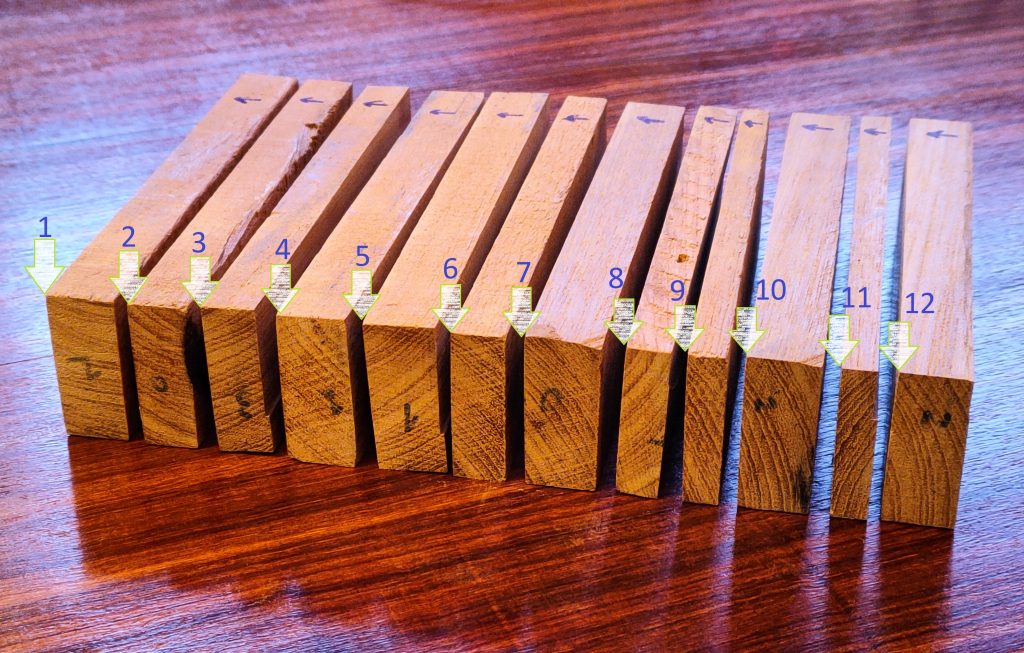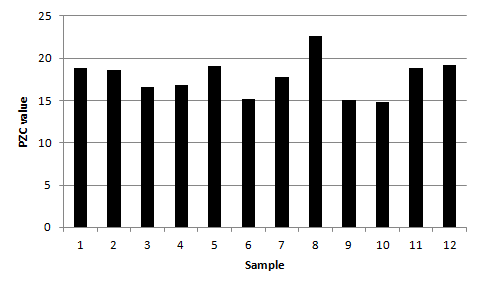We often get asked: is there a relation between chatoyance and Quartersawn / Flatsawn cut?
This implies another question: is a Quartersawn surface different from a Flatsawn surface?
Yes, especially with woods that show evident Medullary Rays, or Flecks, like Lacewood or Sycamore. This subject is discussed in deeper detail in the page Quartersawn vs Flatsawn on London plane dealing with London plane and in page quartersawn vs flatsawn on red oak dealing with red oak.
This page shows PZC measurements on Quartersawn and Rift or Flatsawn surfaces with species with non-evident flecks.
Our first example is a Teak piece from Seralvo which was re-sawn into 12 samples ranging from Quartersawn to Flatsawn, as shown here:

This is how the samples look like:












As shown by chart below, there is quite a lot of variation within the piece, and no clear correlation between cut direction and chatoyance.
